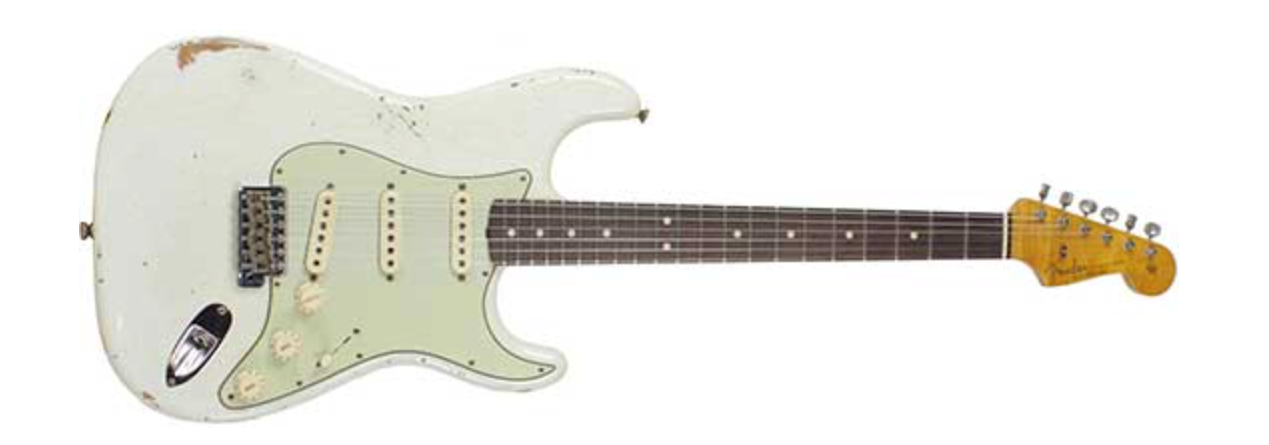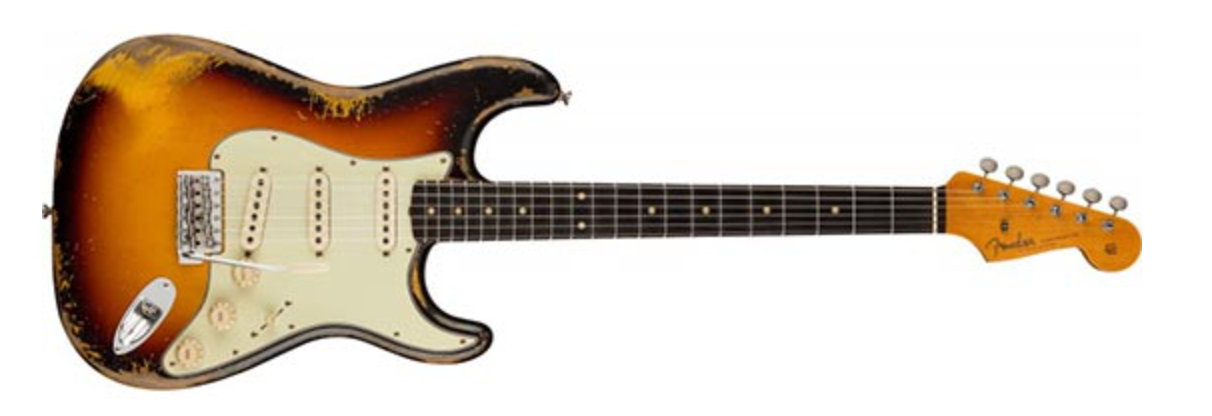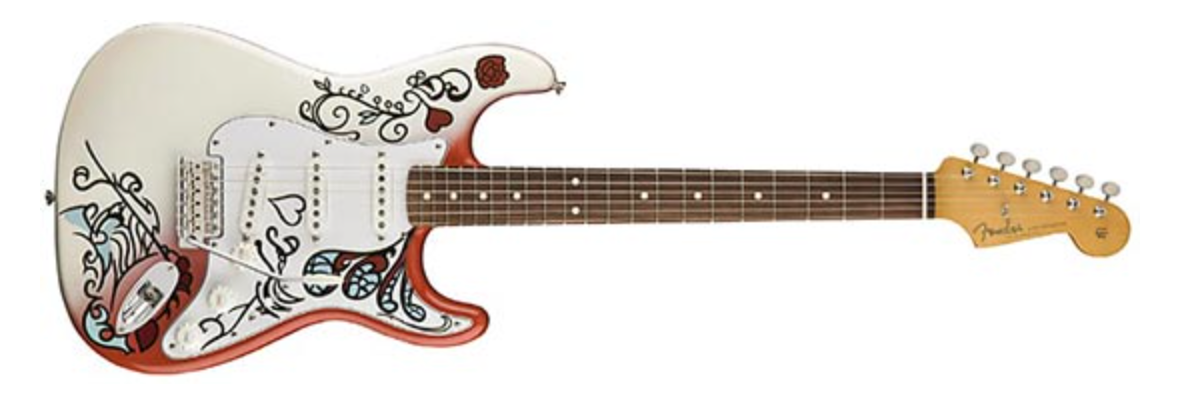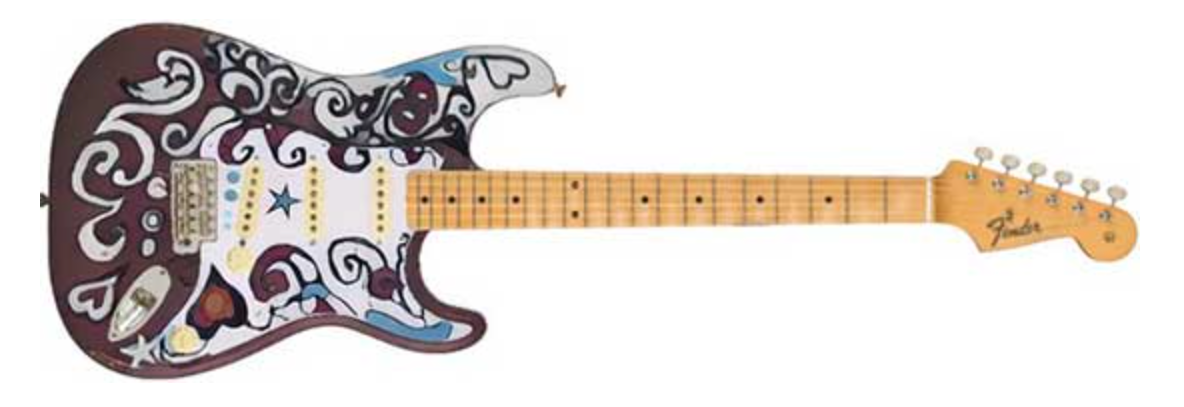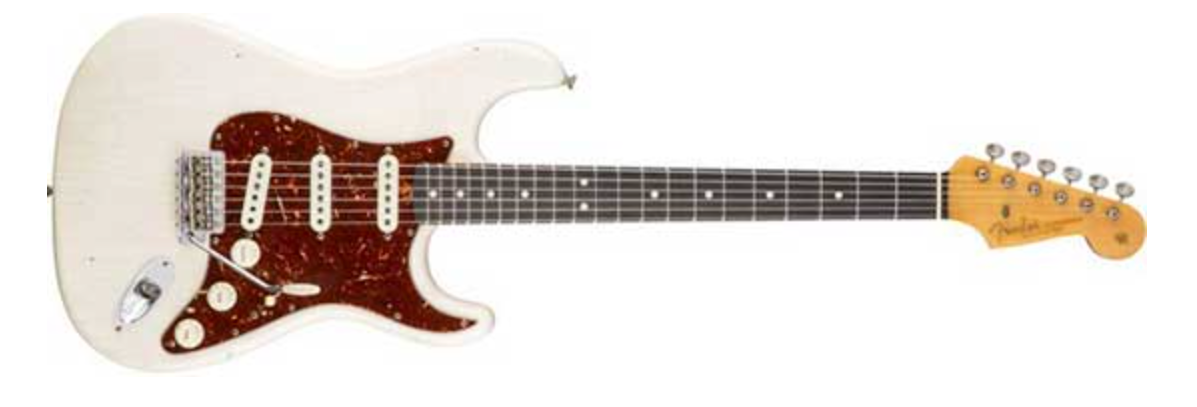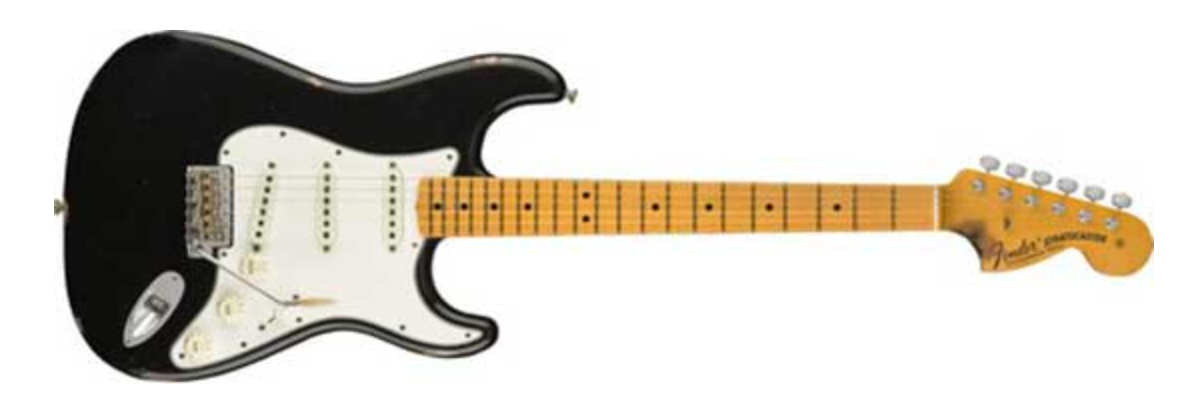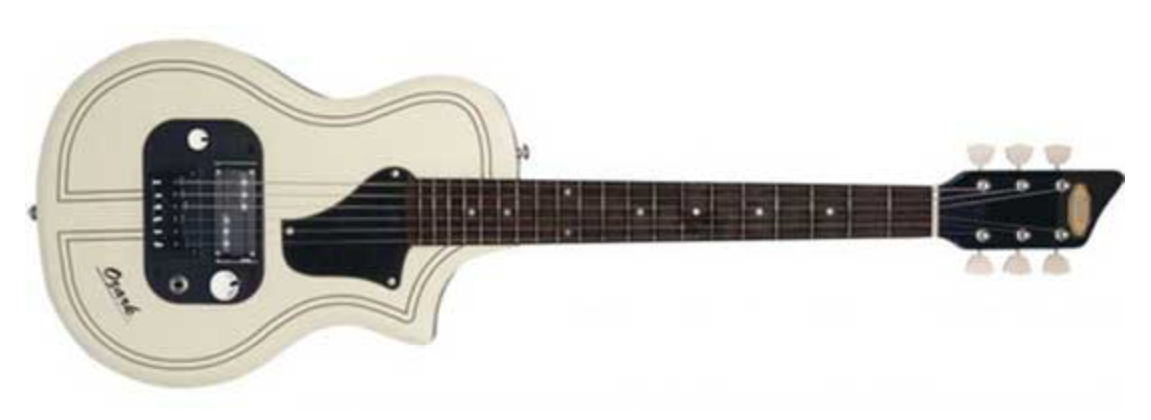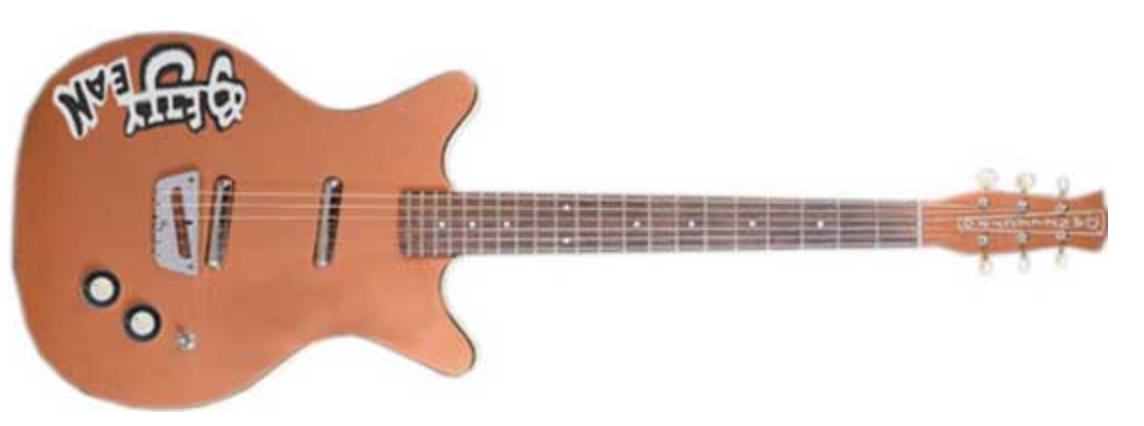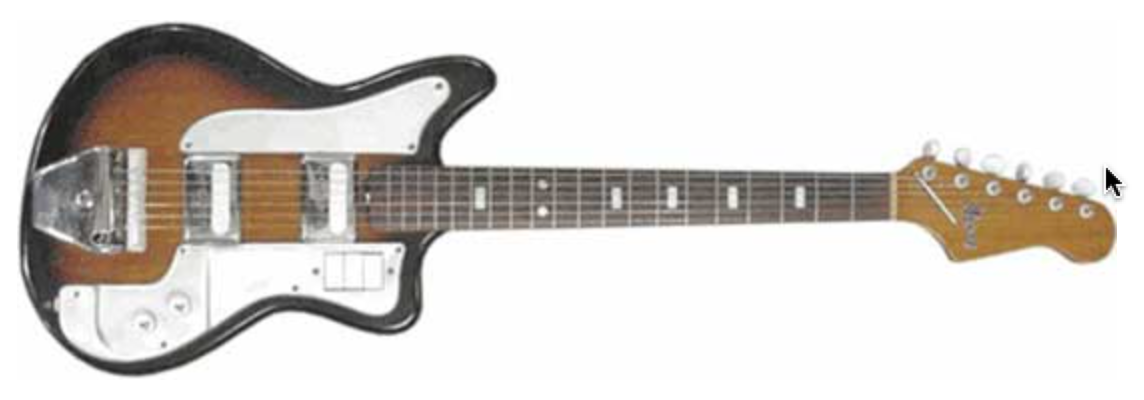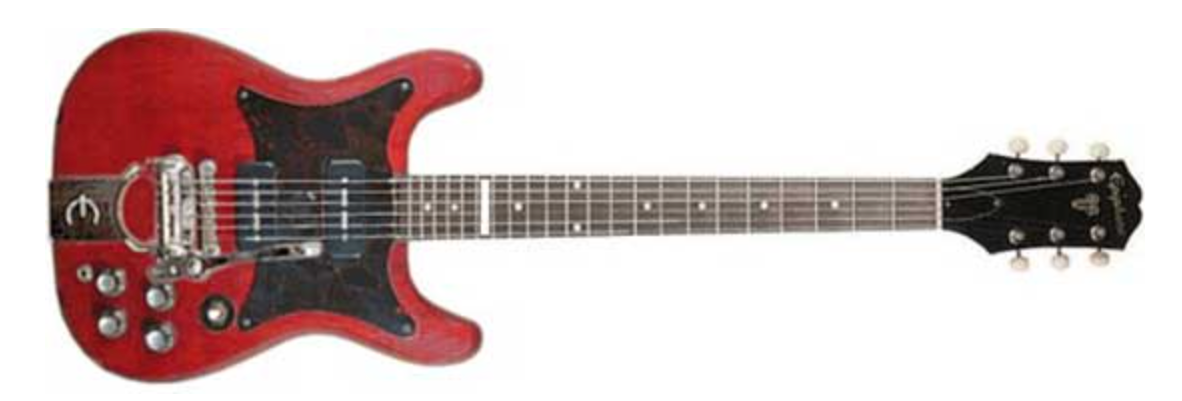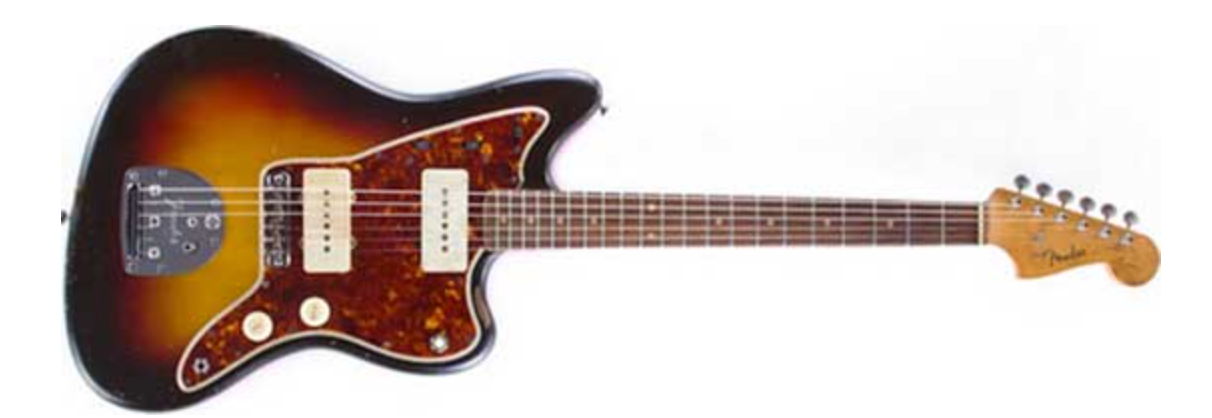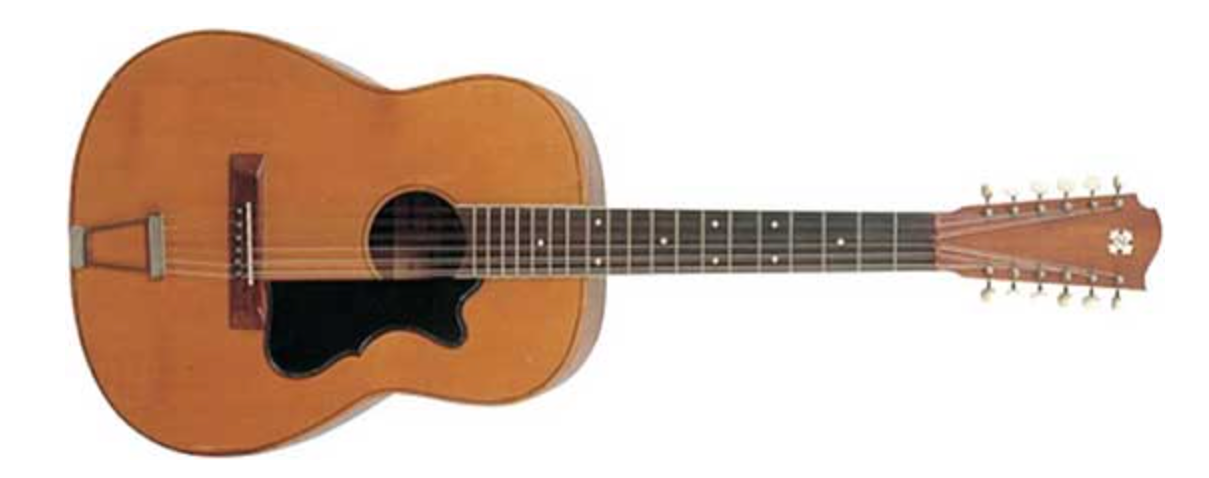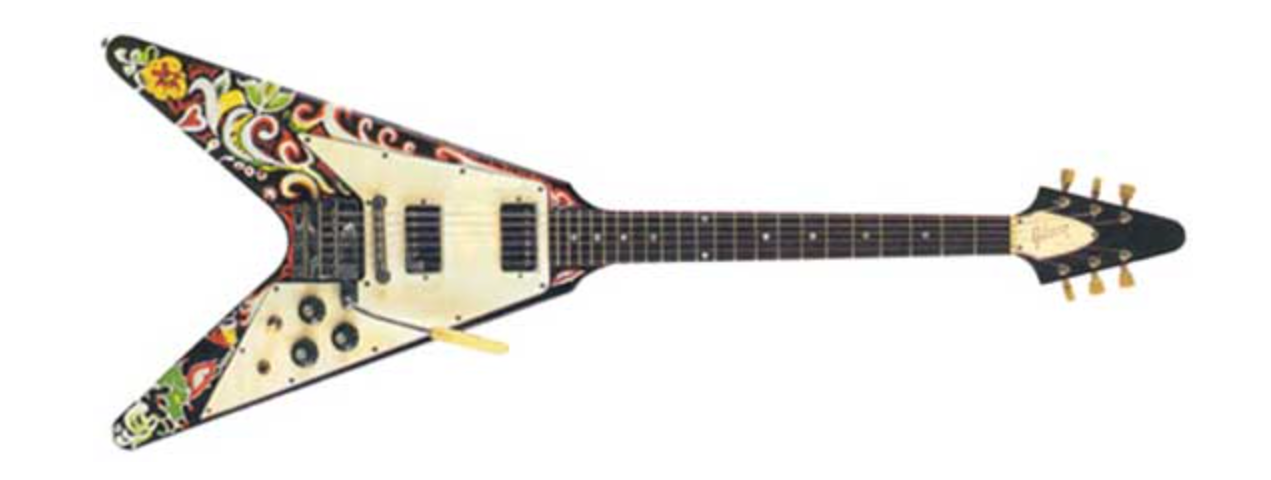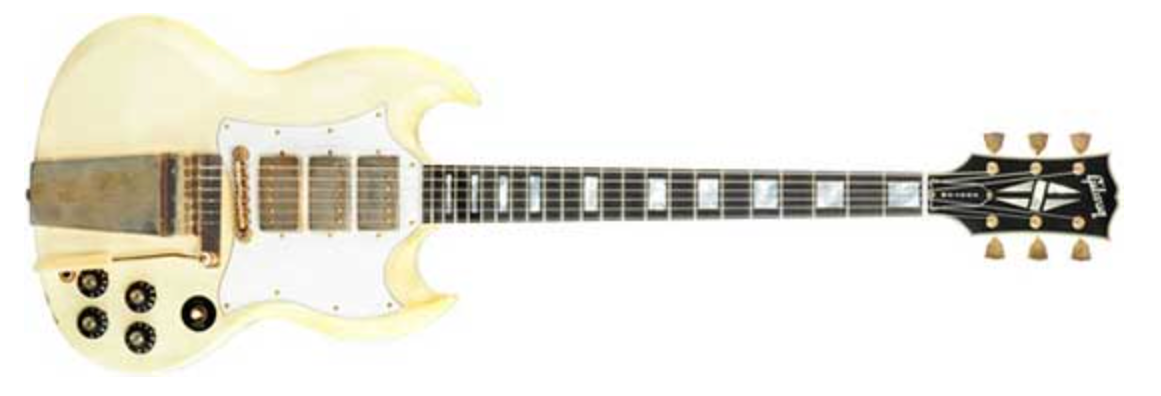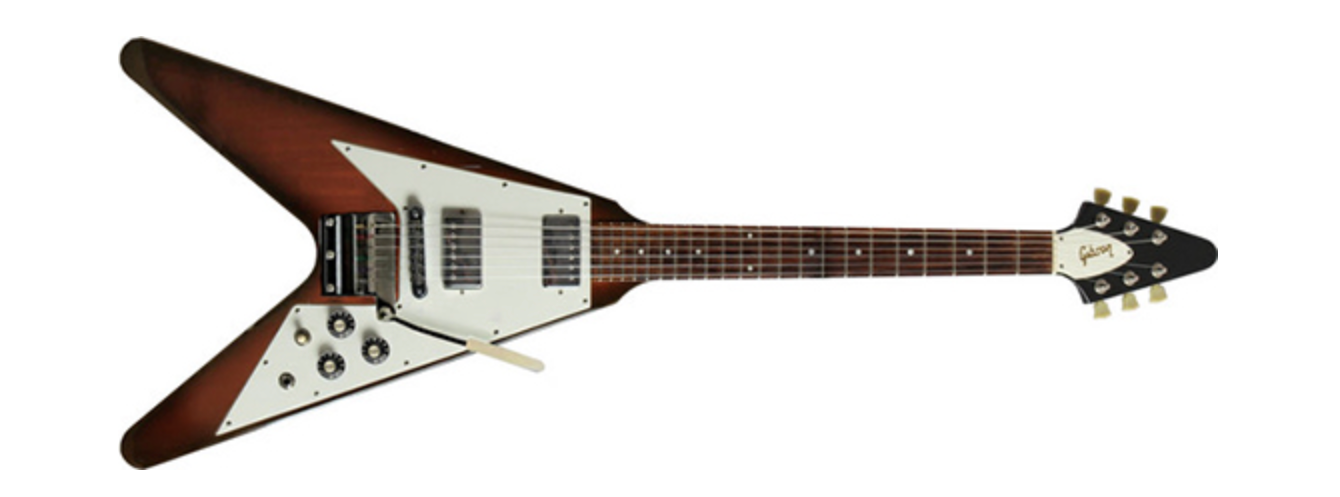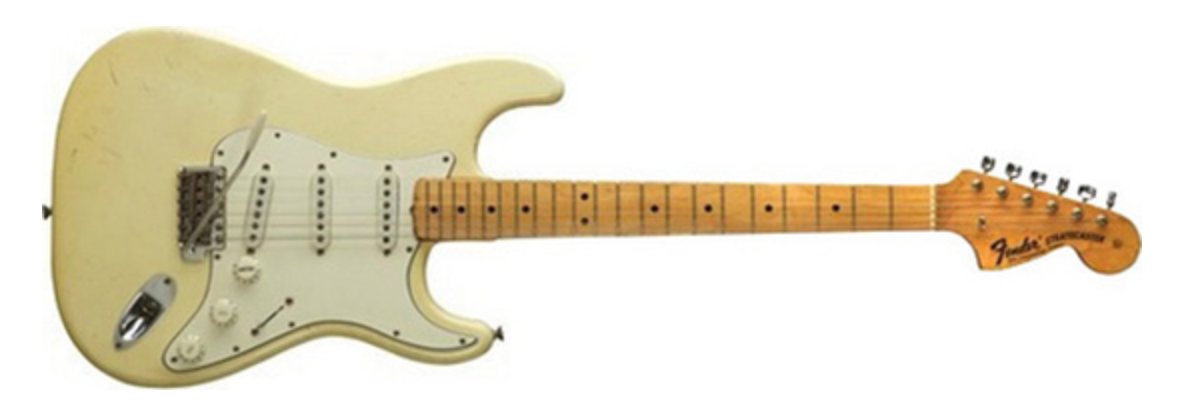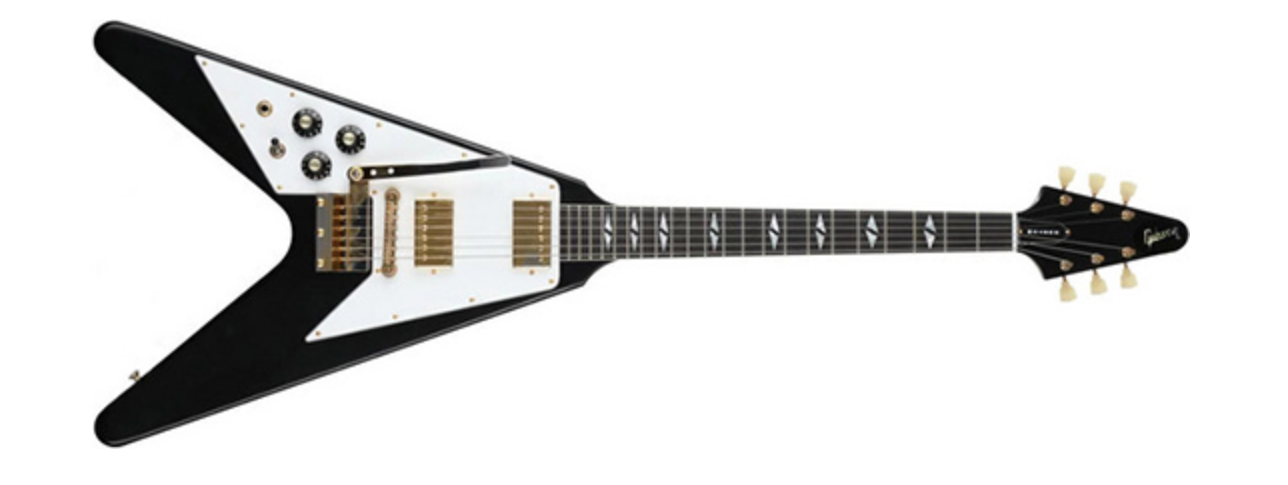Jimi Hendrix had a career that needs no introduction. Revolutionizing the world of rock and roll, he added a more soulful sound to the electric music and many believe he dethroned Eric Clapton to be the ‘god of the electric guitar’.
You can tell immediately that Hendrix was influenced by blues music and he often paid homage to his idols such as Elvis Presley, B.B King, Muddy Water and Robert Johnson. The electric guitar was a way for Jimi Hendrix to channel his soul and passion though and he really connected with his audiences. While he used a lot of different gear throughout his lifetime, it was his pure talent and the way that he could deliver the music that made him so iconic.
Jimi Hendrix’s Guitars
Jimi Hendrix was often known to play Fender Stratocasters. He had a few Strats in his collection but he dabbled in other brands as well. Many didn’t last too long as they were either burned or smashed at the end of his live shows. Find a list of some of his most well-known guitars below.
1964 White Stratocaster (Carol/Linda)
Years used – 1966 to 1967
Hendrix was known for smashing some of his guitars but other he would share his love for. This particular Fender Stratocaster was also known as Carol or Linda and was more than likely the first of these models to belong to the musician. The story goes that Hendrix’s girlfriend at the time, Carol Shiroky, bought the white guitar for Jimi in New York from Many’s Music Shop.
It is more than likely that this Stratocaster was the one Jimi used when he decided to leave America and when he founded the Jimi Hendrix Experience back in 1966. This would mean he used it when traveling between New York and the UK. There’s another story that runs parallel to this one, as Hendriz would borrow an identical guitar to this from Keth Richards’ girlfriend. Because of these two stories it’s hard to know which Olympic white Stratocaster he actually used when founding the band and embarking on the first ever European tour.
The white Stratocaster is the one guitar that is most commonly associated with Hendrix, even though the origin story is a little hazy. It was the only instrument he took with him when he made his trip across the pond and it would be his main guitar for a lot of his gigs and recording sessions, particularly the London Are You Experienced ones that were done at DeLane Studio. By the time 1967 came around Jimi had made a number of appearances and recording where he can be seen playing a Sunburst Stratocaster instead, with the white version sitting in the background. It would continue to do this for shows in both Germany and England before resurfacing for a short tour through France.
1960s Sunburst Fender Stratocaster
Years used – 1967 to Unknown
Jimi Hendrix purchased a set of these Stratocasters which were the 63 and 65 models and they gave some of the most memorable moments of Jimi Hendrix playing ever. The Sunbursts would start to replace the white Strat that Hendrix that he initially had in England and made a debut performance on February 25th 1967 in Chelmsford. If the story is true, one of these Strats would be the first guitar Jimi would sacrifice aka burn after the band played at the Astoria Theater.
When you see Jimi playing guitar with these models you can see how confident and charismatic he was on stage. He would often use his teeth which would go on to be his trademark and at the time this was seen as a wild and crazy thing to do.
During 1967 Jimi would slowly be upping his television performances and most of these occasions would involve these particular Fender Stratocaster models. One of their most infamous gigs was at the Astoria when the band wanted to hit the headlines. The band came to a decision that they should torch Jimi’s guitar on stage on March 31st. There are a lot of stories that surround this Strat which was later auctioned off in 2009 and went for around $575,000.
1963/64 Fender Stratocaster (Monterey Pop Strat)
Years used – 1967
This is arguably the guitar that is most associated with Hendrix. It was famously sacrificed and burnt at the end of the Monterey Pop Festival. The original instrument was a solid red color that had a rosewood neck and he would use it as his main instrument on a brief tour through Europe.
The model is thought to be a 63 or 64 guitar based on the way it is setup and how it has been branded. The smaller headstock had the Fender spaghetti logo on it but this would be changed in 1965. He would switch out to this guitar at the end of his set, set fire to it, smash it and then throw it away into the crowd. This was a toss up on who would be first to smash their equipment between Pete Townshend and Hendriz, with The Who winning the coin toss to go first. So Hendrix took it that extra step to burn the instrument and smash it up. There is only one part remaining of this legendary Fender Stratocaster which is now an exhibit at the Museum of Pop Culture.
1964/65 Fender Stratocaster Saville Theater
Years used – 1967
Another one of Hendrix’s hand painted guitars was the Saville which was originally red. He would use it for a few gigs before playing it at the Saville Theatre in 1967. This particular Strat was just as rare then as it is now. It had a transitional headstock and the pickups were setup specifically to order. The pickups themselves were a creation of Fender at the time and they had three single coils which are now known to be the American Vintage 65. Jimi Hendrix stamped a poem on the back of the body and it is now kept at an exhibition in the Museum of Pop Culture based in Seattle.
1960s Fender Stratocaster (Tortoiseshell)
Years used – 1967 to 1968
Many people know this guitar as the Hollywood Bowl Strat and it was also rare for the time. It came into rotation along with other white models at the time that Hendrix would play during 1967 after the Monterey Pop Festival. Having a Strat that is tortoiseshell is incredibly rare and very few have ever been produced. The 1964 model is deemed to be the best Strat to have ever been produced. This one has a peculiar arrangement of specs which included three single-coil pickups that would go on to define the early stages of what rock music is now known as. The headstock is a lot bigger than the other more transitional ones that were made that year.
The guitar would be used by Jimi until the November of the same year it made its debut but of course he smashed it. It made its final performance at the Blackpool Opera House where he used the guitar to move his stack of Marshall amp gear.
1968 Black Fender Stratocaster
Years used – 1968 to 1970
There was a point during 1968 when Hendric made a decision to keep certain guitars in his collection safe rather than trashing them during live performances. This particular Fender Stratocaster with a maple neck is known to be one of the first that he babied in this way, along with a white version. These elite guitars stood by Jimi into his final performances and would join him for some of his more memorable shows.
Many people didn’t like the changes that CBS made to Fender when they took over in 1965 but Hendrix changed this general perception by playing this 1968 model. It was a maple guitar made from two pieces which were bolted together and had a truss rod running between them. The wider headstock had F style tuning pegs that were made by Schaller instead of Fender. Jimi would take to the stage with this guitar in late 1968 and his last show with it would be in the Septmeber of 1970.
1957 Supro Ozark 1560s
Years used – 1959 to 1960
The Supro Ozark guitar was the first ever electric guitar that Hendrix ever had and it was given to him by his father in 1959. He allegedly bought it from their hometown in Seattle for $89 from Myers Music Shop. This was the model that would see Hendrix become a road musician and was his main instrument for the early years he spent with The Rocking Kings. Throughout this time Jimi Hendrix toured a few different states but remained relatively local to Seattle where we would play at a venue named The Spanish Castle. This place would later become nostalgic for the musician.
There’s not too much information on this obscure model but we do know that it was made by Valco who made instruments for the generic brands during this time. Jimi’s model had a single pickup made from steel which played using magnets. They were typically made from mahogany and it played a lot of different styles and genres well.
There aren’t any videos featuring Hendrix playing this piece but he was always nostalgic of his days with this guitar and he penned a song called Spanish Castle Magic to commemorate it. The Ozark would stay with Jimi until 1960 when it was stolen during a gig at the Birdland Club.
1960s Danelectro Bronze Standard ‘Betty Jean’
Years used – 1960 to Unknown
When Jimi’s Ozark was stolen he asked his father for some financial help and bought the Danelectro Bronze Standard. He called it Betty Jean and it was originally green but he repainted it copper red instead along with its nickname on the top. Not much is known about the time Jimi had with this guitar but it is said that it was named after his then girlfriend Betty Jean Morgan.
The setup of the Danelectro has two single coils and semi-hollow body. This gave it a resonance that was quite fuzzy and was a rare sound at the time. Hendrix’s specific model had a white pickguard and a selector that allowed him to swap between low fuzz tones and the fuller bodied mid-treble. It was once known to be one of the lower brand instruments but now it’s a rare classic that is hard to come by.
1960s Ibanez Jet King
Years used – 1962
Hendrix stepped out of his army days at Fort Campbell halfway through 1962 which is when he formed the King Casuals with bandmates Charles Washington and Billy Cox. Most of the days with the band was spent going between Clarksville and Nashville and it was at this time that Hendrix became obsessed with his Ibanez Jet King, even though he had to restring before every performance. We don’t know whether the guitar was his own or if he borrowed it but the story goes that he couldn’t keep up with the payments so he would pawn it between shows and then the band would buy it back. Jimi was a regular at the pawn shop to help him pay rent and he pawned the Ibanez one last time before he couldn’t buy it back.
The Jet King model is the most distinctive guitar from the brand. Looking at the original blueprints this model was released back in 1960 and it had a humbucker Powersound PSND1 pickup sitting at the neck position. It also had a Powersound PSND2 installed on the bridge and it’s safe to assume this is the setup that Hendrix would have experienced from the guitar.
1961 Epiphone Wilshire
Years used – 1962 to 1964
The Epiphone Wilshire is probably the first iconic guitar that appears in Hendrix’s catalog. He bought the guitar in the latter part of 1962 after a period when he was borrowing and pawning guitars udirng his King Casuals days. At this time they had managed to land a recurring act which was paid at the Club Del Morroco.
During the 60s the Wilshire was one of the most loved mahogany solid body guitars. It featured a cherry red finish and a contrasting black pickguard. For the setup it had two P-90 pickups which paired with the vibrola tremolo bridge – a rare piece of kit for those days.
1959-1964 Fender Jazzmaster
Years used – 1964 to 1965
We all know that Jimi loved his trademarked Fender Stratocaster models but in 1965 he appeared on television sporting a 1959 Jazzmaster instead. He had already earned some notoriety by 1964 so he toured with the Isley Brothers for the later half of that year. Sometime in the middle of 1965 Hendrix went on to become a guitar player for Little Richard which gave him even more recognition with the music industry which would help him become the phenomenon we know him as.
The Jazzmaster was the second Fender model that Hendrix owned outright and he kept it after he left Little Richard and went back to the Isley Brothers in 65. It featured a veneer rosewood fretboard and a sunburst two-tone color finish. We can pick out that it is one of the earlier models for this particular guitar thanks to the Fender logo and the tortoiseshell pickguard.
The guitar would continue with Hendrix’s trajectory until the November of 1965 when he began playing with Curtis King and Joey Dee and the Starliters. For these gigs he would go between this model and a Duo-Sonic, also from Fender. Most of his gear from this time would eventually end up in pawn shops as he had to make ends meet as a fledgling musician.
1960s Zemaitis 12-String Acoustic Guitar
Years used – 1967 to 1968
The Zemaitis 12-String acoustic guitar only ever appeared once with Hendrix during a video that he made for a documentary which was titled Experience, filmed in 1968. He would play this guitar to do a country and blues rendition of the song Hear My Train A Comin. The actual guitar was something a lot more than the standard instrument you could get in a shop. It was made by Antanus Casimere Zemaitis who was a luthier based in London and like all of the vintage Zemaitis guitars in the 60s and 70s, every single one was crafted by Antanus.
Anatnus, nicknamed Tony, had an almost cult like following and he made guitars for Keith Richards, Ronnie Wood and Eric Clapton too. It’s hard to tell what Jimi’s would be made from because they were all crafted from different materials.
1967 Hand-Painted Gibson Flying V
Years used – 1967
Jimi was well known for putting his own stamp on his guitars so they were personalized to him with either poems or his paintings. The Gibson Flying V was a model that Hendrix used for some time and he had to re-paint the motif when it wore off from touring. The guitar was used the most in 1967 when he was on tour and was one of the few Gibsons the guitarist actually owned.
The specs on the Flying V were setup for a left-handed player and had a custom finish. The PAF pickups meant that this particular Gibson was ahead of its time, having been made in 1967 so it’s safe to assume this was a prototype for the 1969 edition. It was used in heavy rotation with his Strats and made several appearances across Europe.
We can only assume that this one was of Hendrix’s more beloved pieces because he didn’t smash it or burn it. Instead he handed it down to Mick Cox who then gave it away, eventually landing in the hands of David Brewis. Brewis would commission an artist to restore the hand painted mural to the original one featured on the Gibson Flying V and it is now an exhibit at the Rock N Roll Hall of Fame Museum.
1967 Gibson SG Custom
Years used – 1968 to 1970
The Gibson SG Custom was one of the guitars that Jimi used the most and would be one of his favorites in times of peace. It made its first appearance in the November of 1968 when he played at the Rhode Island Auditorium. This show was taped and a live album was sold the next year. Hendrix played this guitar both with The Experience and for his solo project when he was backed by the Band of Gypsys.
Originally made in 1967, the SG is a single-piece guitar featuring a mahogany neck and a body that has been finished in two tones of white. The inlays are diamond shaped and built into the neck which was a custom feature for the model. The pickups used are three full humbuckers from the Gibson signature line and its these that give the guitar that Hendrix sound of blues and rock. The tone it produced was a big contrast to his Strats and would change the vibe of his shows.
Jimi made the guitar famous when he used it as a guest appearance on the Dick Cavett Show. He took it on his European tour and would bring it out to do his soulful performances of Red House. The guitar is still in one piece and is held as a piece of music history by the Hard Rock Cafe. They display it in Atlantic City where it has remained intact and safe since its sale at auction.
1969 Gibson Flying V
Years used – 1969 to 1970
Another Flying V that Hendrix used along with his Strat was this one and it was used extensively on the road during the year Jimi had it. Though it’s not as iconic as his other one, it inspired how he wanted his signature black Gibson to be made. It would make a rare appearance in 1969 at Madison Square Garden.
The guitar ended up being more than just an instrument in his rotation for Jimi. The thicker sound it produced meant he could push his boundaries and he began to collaborate with Lonnie Youngblood. They were allegedly going to team up to make a jazz-blues duo but after Jimi’s death, only one of their singles ended up being released.
The lesser known Flying V was auctioned off along with other guitars that came from Hendrix’s arsenal. It’s another one that is owned by the Hard Rock Hotel and Casino and is displayed at their venue in Las Vegas, Nevada.
1968 Woodstock Strat
Years used – 1968 to 1970
The most associated guitar for Hendrix is the Woodstock Stratocaster which became an item of history when he used it at the Woodstock festival. In 1969 Jimi Hendrix was the highest paid and most well-known rockstar for that hear, and his image for the Woodstock festival was taken with this Fender Stratocaster after the star spangled banner was revamped.
The origins of this guitar are ambiguous but you can see that it has specs from the 60s. He used it in rotation with his Gibson’s as well as the black Strat. The headstock on this model is thicker and it is bolted to the maple neck and the fretboard. It stood out for its sound and was famously used by Hendrix in a rendition of the National Anthem that was sung to protect the war in Vietnam.
This is another guitar that outlived Jimi and it has been sold at various auctions over the years. The official record says that it is now at the Museum of Pop Culture but many people say that this is a hoax.
1969 Left-Handed Gibson Flying V
Years used – 1969 to 1970
The Flying V is a guitar that had a design that was way ahead of its time, and the same can be said of Jimi and his futuristic sound. While this wasn’t his first Flying V, he did help to make the model iconic and standardized these of it. Before him not many other guitarists would be daring enough to sport one of these models. It was one of the guitars that Jimi used up until the day he died for lower key performances and it still remained built even when he passed.
Finished off in plain black, the hardware is gold and stands out against the white pickguard. There are some distinctive features like the fully bound neck and body which were a rarity back then. The Gibson logo was placed on the headstock which was also off and the fretboard inlays were diamond shaped. This specific model was built by Gibson as a custom order but we’re unsure whether it was made for his exact specifications. What gives the guitar more value is that it has the potential to be the last guitar he would ever used in a live performance on the Isle of Wight at the festival there in 1970.
Jimi Hendrix’s Amps
Silvertone Twin Twelve Combo
Years used – 1962 to Unknown
Silvertone amps were a staple for guitarists during Jimi’s time and he would use it when he played with the King Casuals. They played frequently at a men’s club and the owner of the venue grew fond of the band so purchased them some new gear. Hendrix got the Twin Twelve Combo while the other band members would receive Fender Bandmasters.
Fender Twin Reverb
Years used – 1965 to 1966
This is allegedly the second amp that belonged to the band when Hendrix was playing with Curtis Knight back in 1966. He more than likely used it in the years running up to his notoriety and can be seen using it at venues such as George’s Club and the Spanish Castle.
Sound City One Hundred Head
Years used – 1967 to 1970
The Sound City One Hundred Head amp was one of the staple pieces of gear that would be in rotation for both The Experience and for Jimi as a solo musician. Since day one of getting this amp he would use it up until his final shows before he passed. It’s a versatile amp head that was used for both recording and touring.
Jimi Hendrix’s Pedals
Marshall Supa Fuzz
Years used – 1967 to 1970
Jimi purchased this Marshall pedal in the middle of recording Are You Experienced so that he could sharpen his sound for the album and for live shows. The receipt for the pedal was recently auctioned off and it was shown to have been purchased on January 20th 1967. It made a brief appearance on a few tracks from the album including Purple Haze but later it would be used solely as a piece of gear for live shows.
Vox V846 Wah Pedal
Years used – 1969 to 1970
Jimi Hendrix used a lot of different wah pedals throughout his career but by 1969 this Vox model was his go-to choice. It became known once he played it at the Woodstock Festival. Dave Weyer would help Hendrix modify this pedal and it’s distinguishable because it doesn’t have any Vox branding.
Conclusion
To call Jimi Hendrix a legend is a complete understatement and he’s easily one of the best guitarists history has ever known. His skills and vision fit right into the time his career took off and he put the electric guitar at the forefront of rock and roll’s culture. His powerful legacy lives on through his recordings and there’s no mistaking that he was a musician that changed the course of music history forever.
FAQs
What guitar did Jimi Hendrix play in the studio?
He was known to use a lot of different guitars in the studio which we have detailed above but his go-to favorite was always his Stratocaster.
Why did Hendrix play a Stratocaster?
Hendrix played a Stratocaster, which is also John Mayer’s guitar of choice because he liked that they used a single thin coil to create his style of playing. Not only did he help develop the Fender Stratocaster, but that model also helped him develop too.
What guitar did Jimi Hendrix play on Red House?
He would have used either a Flying V or an SG for Red House along with an effects pedal to create the signature sound.

